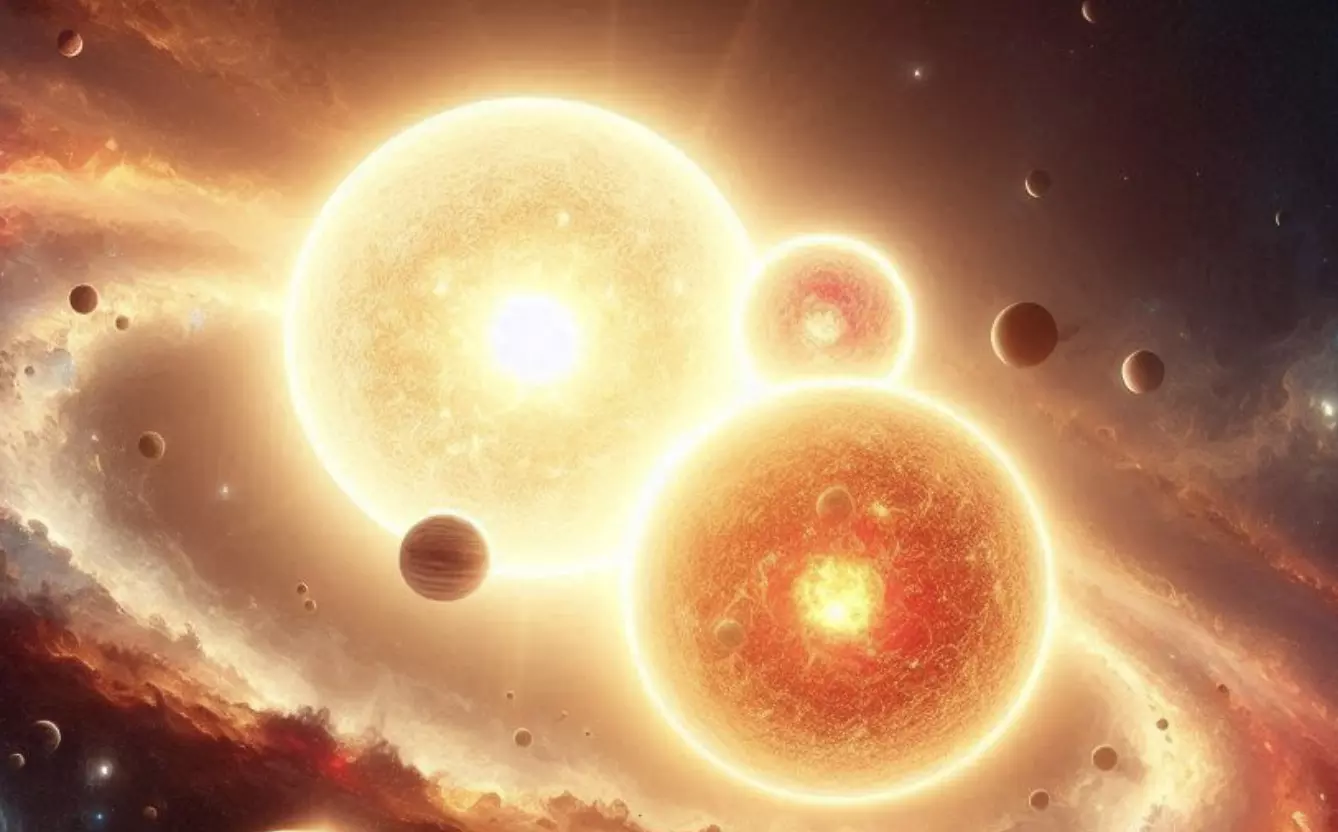India's historic discovery: A triple-star system with three suns
India's historic discovery: A triple-star system with three suns

In an extraordinary breakthrough, Indian astronomers have discovered a triple-star system, GG Tau A, located 489 light-years from Earth. This pioneering finding, led by Liton Majumdar from the National Institute of Science Education and Research (NISER) in Odisha, could revolutionize our understanding of how planets form.
GG Tau A is no ordinary star system. Unlike our Sun, which is a single star, GG Tau A comprises three stars orbiting one another. This rare formation offers an invaluable chance to explore how planets might evolve in complex multi-star environments. The system, estimated to be between 1 and 5 million years old, is surrounded by a protoplanetary disk—a dense ring of gas and dust where planets begin their formation journey.
The team, using advanced radio telescopes in the Atacama Desert of Chile, focused on the coldest regions of the disk, where temperatures plummet to 12 to 16 degrees Kelvin. In these frigid areas, molecules freeze into minuscule dust particles, which are crucial for planetary development. These frozen molecules clump together over time, forming larger structures that eventually become planets.
This discovery offers new insights into how planets can form in more complex star systems. The interactions between the three stars in GG Tau A impact the behavior of the gas and dust in the surrounding disk, creating an ideal environment to study the early stages of planet formation. Understanding the chemical and physical conditions in such systems not only enhances our knowledge of planetary origins but also provides a deeper understanding of the diverse exoplanets that may exist in the universe.
The findings from GG Tau A underscore the importance of studying multi-star systems to unlock the mysteries of planetary formation. As research continues, astronomers hope to further unravel how celestial bodies mature and evolve in these exceptional settings, paving the way for even more groundbreaking discoveries in astronomy.

